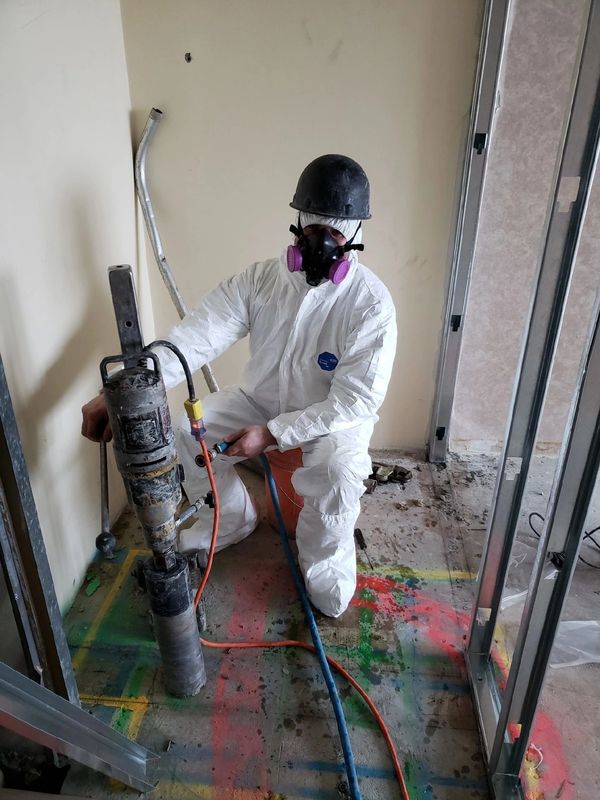Secret Advantages of Utilizing Concrete Scanning Innovation
Secret Advantages of Utilizing Concrete Scanning Innovation
Blog Article
Elevate Your Building And Construction Refine With the Strategic Insights of Concrete Scanning for Enhanced Performance
One such innovation that has transformed the building industry is concrete scanning. By using the critical understandings provided by concrete scanning, construction professionals can unlock a world of enhanced efficiency and structured procedures.

Benefits of Concrete Scanning
Enhancing project efficiency and safety, concrete scanning offers a non-destructive technique for identifying hidden objects within concrete frameworks. By making use of modern technologies such as ground-penetrating radar (GPR) and concrete x-ray imaging, building and construction groups can properly locate rebar, post-tension cables, electrical conduits, and various other obstructions prior to drilling, cutting, or coring right into concrete.
The advantages of concrete scanning are many. It minimizes the threat of unintended damage to crucial structural components, minimizing the probability of expensive repair work and project delays. Secondly, it improves employee safety by giving real-time insights right into the location of surprise dangers. Building and construction websites can be complex settings, and understanding what lies beneath the surface area can protect against injuries and accidents.
In addition, concrete scanning promotes general task efficiency by avoiding and enhancing operations rework. By identifying potential problems beforehand, teams can adjust their plans proactively, conserving time and sources in the long run. Essentially, the fostering of concrete scanning innovations is a calculated financial investment that pays dividends in terms of safety, productivity, and cost-effectiveness.
Technology Combination for Effectiveness
Concrete scanning's ability to enhance operations and boost project efficiency can be additional enhanced with critical assimilation of advanced innovations. By including Structure Details Modeling (BIM) software program right into concrete scanning processes, building teams can achieve a higher degree of precision and sychronisation. BIM permits for the creation of 3D versions that offer comprehensive understandings into the project, allowing better decision-making and reducing the chance of mistakes. Additionally, the integration of Increased Truth (AR) technology with concrete scanning can boost on-site visualization, enabling project supervisors and workers to overlay electronic info onto the physical atmosphere in real time. This can facilitate extra exact positioning of aspects and improve interaction amongst employee. The usage of drones for aerial studies in conjunction with concrete scanning can quicken data collection and evaluation, enabling quicker decision-making and progress tracking. Overall, the calculated integration of these modern technologies can dramatically increase performance and productivity in building and construction jobs.
Avoiding Expensive Errors
Exactly how can thorough attention to detail throughout concrete scanning procedures help construction groups in preventing pricey errors? By utilizing innovative scanning innovations such as Ground Passing Through Radar (GPR) and electro-magnetic induction, building teams can precisely identify rebar, utilities, spaces, and other blockages within concrete frameworks. Additionally, concrete scanning assists in ensuring structural honesty by identifying weaknesses or defects in the concrete very early on, permitting for timely repair services and modifications.
Enhancing Task Monitoring
Careful focus to information during concrete scanning processes not only aids in preventing expensive mistakes however likewise lays a solid structure for reliable project management in construction undertakings. By integrating concrete scanning innovation into job monitoring methods, read this post here building teams can streamline operations, enhance communication, and guarantee that jobs stay on track.
Concrete scanning provides important understandings into the architectural stability of existing elements, enabling job managers to make informed choices concerning layout modifications or building and construction sequences. This proactive approach lessens the risk of unanticipated hold-ups or rework, inevitably saving time and resources. Furthermore, the information gotten from concrete scanning can be integrated right into Building Info Modeling (BIM) platforms, enabling real-time partnership and coordination amongst numerous stakeholders.
Furthermore, concrete scanning helps task supervisors recognize prospective threats or obstacles before that site they intensify into bigger problems, promoting a much safer job atmosphere for all included. With improved presence and accuracy supplied by concrete scanning technology, task managers can properly plan, monitor, and implement building tasks with higher efficiency and self-confidence.
Maximizing Performance
One key aspect of making best use of performance is with the adoption of concrete scanning technology. By using ground-penetrating radar (GPR) and various other scanning methods, building and construction teams can precisely find rebar, avenues, and various other subsurface aspects, minimizing the danger of pricey errors and delays during excavation and boring.
In addition, embracing Building Info Modeling (BIM) software application can substantially enhance productivity by producing thorough 3D designs that improve job visualization and control amongst various trades. BIM enables better clash discovery, making it possible for concerns to be determined and settled prior to building also begins, saving time and resources over time.
Executing a lean building method, which focuses on removing waste and maximizing performance across all job stages, is another efficient strategy for maximizing efficiency. By promoting partnership, communication, and continuous improvement, building groups can function more cohesively in the direction of attaining job objectives in a streamlined and effective manner.
Conclusion
To conclude, the strategic application of concrete scanning in the construction process supplies various advantages, consisting of enhanced performance, cost savings, enhanced task management, and improved performance. By integrating this innovation, building and construction teams can stay clear of costly errors, simplify their operations, and maximize their overall job result. Concrete scanning is an important device that can boost the building and construction process and result in more successful and successful outcomes.

Report this page